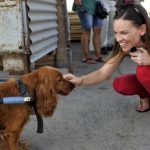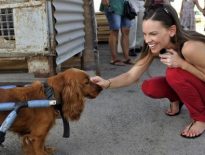Following a successful manned docking with a prototype space station, China’s historic two-week orbital mission ended with a bumpy landing and three grinning astronauts.

China’s Shenzhou 9 space capsule landed at about 10 p.m. EDT (10 a.m. Friday, June 29 Beijing time) in InnerMongolia, an autonomous region of the People’s Republic of China. To prepare for their journey home, the space crew — which included China’s first female astronaut Liu Yang — separated the Shenzhou 9 capsule its target, the Tiangong 1 prototype space module, on Wednesday (June 27).
Their landing was broadcast live on China’s state-run CCTV television network, showing the capsule streaking through the atmosphere like a meteor, deploying its main parachute, then making the final landing and rolling over on its side in a rough touchdown.
RELATED: Are you scientifically literate? Take our quiz!
“We fulfilled the first manned manual docking,” mission commander Jing Haipeng told CCTV reporters after exiting the Shenzhou 9 capsule. His comments in Chinese were translated into English by CCTV. “For the country and people all across the country, thank you for your concerns.” [Photos of China’s Shenzhou 9 Mission]
Jing and crewmates Liu Yang and Liu Wang appeared to be in good health after their space mission. The trio wore broad smiles and waved to cameras after leaving their spacecraft, but did sit in reclined chairs to help ease their adaptation back to Earth’s gravity after nearly two weeks in weightlessness.
Shortly after the landing, China’s Premier Wen Jiabao proclaimed the Shenzhou 9 mission a complete success.
“This manned docking mission of Tiangong 1 and Shenzhou 9 marks a large milestone, a major breakthrough for China to master the space docking technology,” Wen said while reading a statement. “And also, it marks a decisive step forward on China’s second step on its space strategy.”
China’s big space leap
China’s Shenzhou 9 mission, which included successful displays of manual and automatic dockings, represented an important leap forward for China’s space program. In addition to being China’s longest space mission to date, it also tested technology vital for the country’s goal of building space station in orbit by the year 2020.
“Chinese astronauts have their own home in space now,” Jing told China’s President Hu Jintao on Tuesday (June 26) during a special call according to the state-run Xinhua news agency. “We are proud of our country!”
And while the orbital linkups are important technological achievements for China, the mission also carried a wider social impact because it included the country’s first female astronaut: the 33-year-old Liu Yang.
“It was like a home in Tiangong, and I feel very happy and proud of my country,” Liu Yang told reporters after landing.
Jing, the commander, is China’s first veteran astronaut to fly in space twice. The third crewmember, Liu Wang, served as the Shenzhou 9 docking pilot.
“It feels really good to feel the ground and to be back home,” Liu Wang said.





